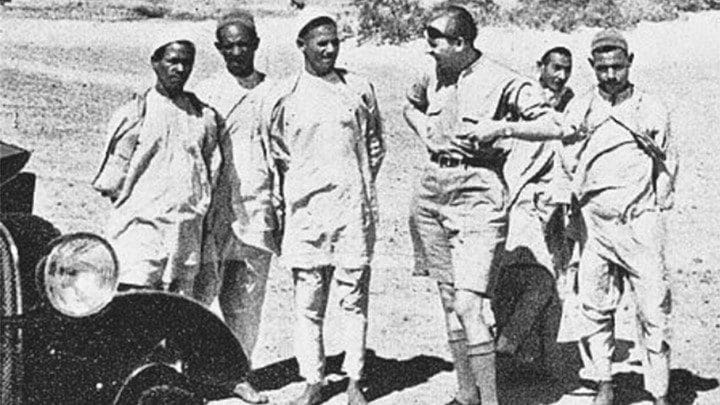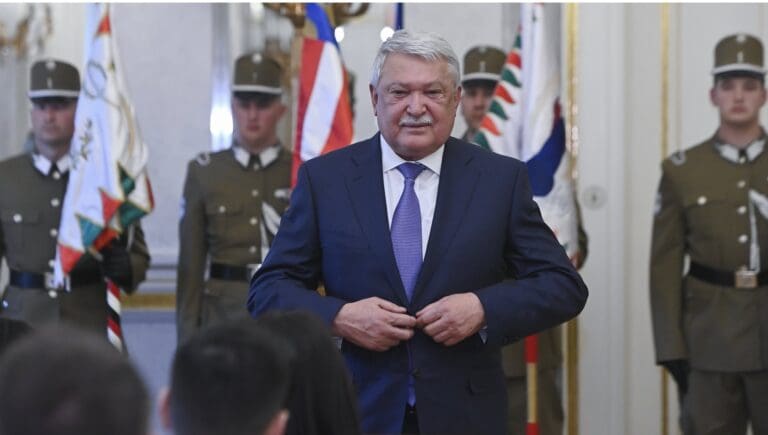The origin of Hungarians has been a matter of debate and is a truly exciting story. What seems to be certain is that a nomadic Finno–Ugric-speaking group from the Urals ventured into the far-away west to settle in the Carpathian Basin, eventually ending up fully and completely European over the course of the centuries and changing so much that today’s Hungarians are fundamentally different from the group which initially departed on their long way to Europe.
The complete transformation that Hungarians went through is best represented by comparing the way of life of Hungarians today with that of their closest linguistic relatives, the Khanty and the Mansi (formerly known as the Ostyak and the Vogul), who remained in the Urals. Living in the Siberian part of Russia, the religion of the Khanty and the Mansi is mixed between Eastern Orthodoxy and Shamanism. Their housing is traditional, similar to the tipis of the Native Americans (in Siberia, the word for the portable tents is chum), and they earn their livelihood as deer-herders, fishermen and taiga hunters. In other words, despite the linguistic similarities, the overall lifestyle of the Khanty and Mansi is so different from that of the Hungarians that the connection between the two groups was disputed until as recently as in the 20th century, with some preferring other theories of the Hungarian origin. For more information on these debates, you can read our article about Turanism, a movement promoting a mythical alternative explanation for the origin of Hungarians. Some elements of the Hungarian ethnogenesis are even more interesting and unique, however. Hungarian Conservative has recently covered the intriguing story of the Jász, the Kun and the Csángó.
While their stories and origins and ethnogenesis are genuinely captivating, there is one Hungarian ethnic group which stands out as the most exotic. This article is dedicated to the Magyarab people,
a community of possible descendants of Hungarians whose forefathers were brought to the region of Northern Africa by the Ottoman Empire.
In the 16th century, the lands of modern-day Hungary, as well as those of Egypt and Sudan, where the Magyarab groups now reside, were part of one political entity. The Ottoman conquest had created a colossal multi-ethnic empire stretching across three different continents, from Central Ukraine in the northeast to modern-day Ethiopia in the south. Maintaining this huge empire was impossible without the collaboration of the conquered peoples, so the Ottomans had to recruit troops from among them–sometimes voluntarily, but more often through a special ‘tribute in blood’, the devşirme, by which the Janissary corps in particular was staffed. In this system Christian youths were taken, primarily from the Balkan provinces, converted to Islam, and drafted into Ottoman service.
Notwithstanding the fact the Hungarian lands were one of the most distant stretches of the Empire, which were much harder to control than the earlier acquisitions such as Greece, Albania or Bulgaria, the Hungarian population still experienced the recruitment of its people under the Ottoman regime. Whereas it is not clear how exactly the Hungarians who were relocated from the shores of the Danube and Tisza rivers to the banks of the Nile got into the ranks of the Ottoman army, legend holds that they were soldiers of the Empire and were brought there by Sultan Selim to serve as border guards. Alternatively, these groups of Hungarians just ended up in the subjected Egypt-Sudan after they retired from their army duties ending their military career there.
The mysterious Magyarabs, whose denomination conveniently looks as if it consisted of the words Magyar and Arab (although the exact etymology is different: the word ab means tribe in Nubian), would have probably remained unknown to the world had some adventurous Hungarians not discovered their distant kin. László Almásy, one of the key figures and pioneers of Hungarian Africa research, whose story we covered by Hungarian Conservative, was first to report on the existence of Magyarabs after he found them during his expedition in Africa in the 1930s. It was near Wadi Halfa, on one of the islands in the Nile, that László Almásy encountered representatives of the Magyarabs. Despite having preserved only a couple of words from the Hungarian language, being Arabic speakers and of the Muslim faith, the Magyarabs had a strong identity that set them apart from from the local Arabs and Nubians. The Magyarabs, based on oral tradition, traced their lineage back to a group of Hungarians who had founded their community hundreds of years earlier. Legend has it that Ibrahim (or Hassan) al-Magyari, after finishing his military service, settled near the Nile with his compatriots, and they married local women. It was the apparent descendants of Ibrahim al-Magyari that Almásy stumbled upon.
No Title
No Description
The next and more thorough expedition that reached Wadi Halfa was in 1965, led by István Fodor, a respected orientalist and expert of the Arabic language. Fodor conducted an extensive study of the local population, delving into their history, behaviour, and culture. During his research, Fodor also made intriguing observations about the features of their physical anthropology. He noticed that some individuals had ginger hair, which strongly contrasted with the predominantly black hair of the Nubians. Additionally, Fodor also observed that the Magyarabs’ skin tone tended to be lighter, and their eyes were smaller, a characteristic reminiscent of those commonly found among Hungarians. While immersing himself in the local culture, Fodor also collected a series of sayings that shared similarities with Hungarian expressions. One such saying [transcribed with Hungarian characters], ‘Rá’sz el-mágyár zejj el-hágyár,’ conveys the notion that the head of Hungarians is as hard as a stone. Another saying, ‘Ál-Mágyárí lá jiszálli fíl-meszgyid,’ meaning that Hungarians do not pray in mosques, possibly alludes to the times when the ancestors of the Magyarabs were still Christians.
Further evidence supporting the connection of Magyarabs to Hungary can be found in other studies of István Fodor,
who discovered historical sources about the Magyarabs in Franciscan friar Gábor Pécsváradi’s book titled Journey to Jerusalem.
The book, originally written in Latin, was published in Hungarian in 1983. The Hungarian edition of the book includes a letter written by Pécsváradi to the royal master cup-bearer János Bánffy, adding more weight to its authenticity. In this letter, the Franciscan author recounts one of his discussions in Jerusalem on the day the Turkish army entered the city, which took place on the final day of the year 1516. As Pécsváradi vividly describes, he had interactions with Hungarian soldiers who were serving in the Turkish army—these units were marching to Egypt shortly after the events in Jerusalem. At the end of January 1517, the same soldiers actively participated in the Ottoman victory over the Mameluke sultan. They may have ended up in southern Egypt and may very well be the ancestors of the Magyarab population.
Interestingly, Fodor in his work indicated that there is another group with Hungarian origin in the surrounding area, which has a similar story to that of Magyarabs, but the story differs in some details. Unlike the 16th century Hungarian Ottoman soldiers who initially were Christians and converted only later, according to Fodor, there was a group of Hungarians who were expelled from Hungary by the Austrian authorities (possibly during the reign of Maria Theresa, shortly after the end of the Turkish times) due to their Islamic faith. ‘Mahmud Abdallah Avad, an eighty-year-old man in Aswan, told me in 1965 that his ancestors came to Egypt when Hungary and Austria were one country, and a queen who hated Muslims was sitting on the throne,’ Fodor said in an interview. In the same 2008 interview, Fodor acknowledged that a story of Hungarians migrating and settling in Africa and preserving their identity and origin myth sounds incredibly bizarre, but he doubts that it was made up:
‘Suppose there was a group down there in far-away Nubia who, in their boredom, decided to invent some European origin for themselves, to see if they could reach out to someone in Europe. I am convinced that they would not have chosen Hungary and the Hungarians, which is almost always struggling with economic and political problems, but Sweden, Germany or perhaps America. Knowing the level of education in the Arab world, I can say that there is almost nothing about Hungary, but especially about Hungarian history, in the textbooks there. However, the Magyarabs have been telling Europeans visiting Nubia for a century now that they are from Hungary and that they consider the Hungarians to be their brothers.’
Unfortunately, due to the construction of the Aswan Great Dam, many of the settlements that were once inhabited by Magyarabs were submerged by water in the 1960s. The perished settlements include: Ibrim, Qatta, Tuska and Aneba on the Egyptian side, as well as Wadi Halfa and Magyararti (i.e. Hungarian) Island in Sudan. Only Aswan, although far from being exclusively Magyarab, was luckily spared of this fate.
Although a large part of the 10–15- thousand-strong Magyarab population was relocated to different parts of the two countries (near the Sudanese-Ethiopian border), the unique cultural landscape of the Magyarabs was buried under 16–18 metres of water.
The lost archaeological evidence includes graves that could have enabled genetic testing,
finally settling the question about the origin of the Magyarabs. However, further research into the history of the Magyarabs can nevertheless be done in Turkish, as well as possibly British archives, as these were the great powers who had control over both Egypt and Sudan at various points in time.
Albeit being obscured by time, as Fodor points out, the story of the Magyarabs is still relevant. In our present age, when millions of Hungarians are living as citizens of foreign countries beyond Hungary’s borders, the fact that the Magyarab ethnic group proclaims its Hungarian origin even in distant Nubia is not only fascinating but also encouraging. These African Hungarians no longer speak the Hungarian language, but the ties to Hungary are built into their collective memory. The patriotism of the Magyarabs can serve as an example for Hungarians living abroad and at home, demonstrating that even in trying circumstances, and in a completely alien environment, Hungarian identity can be preserved.








